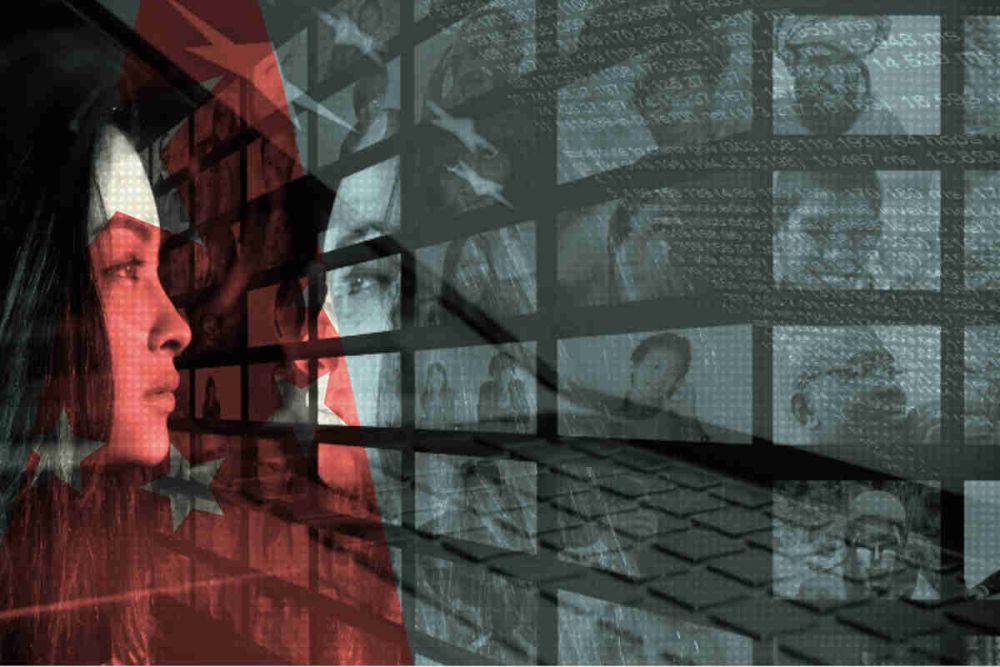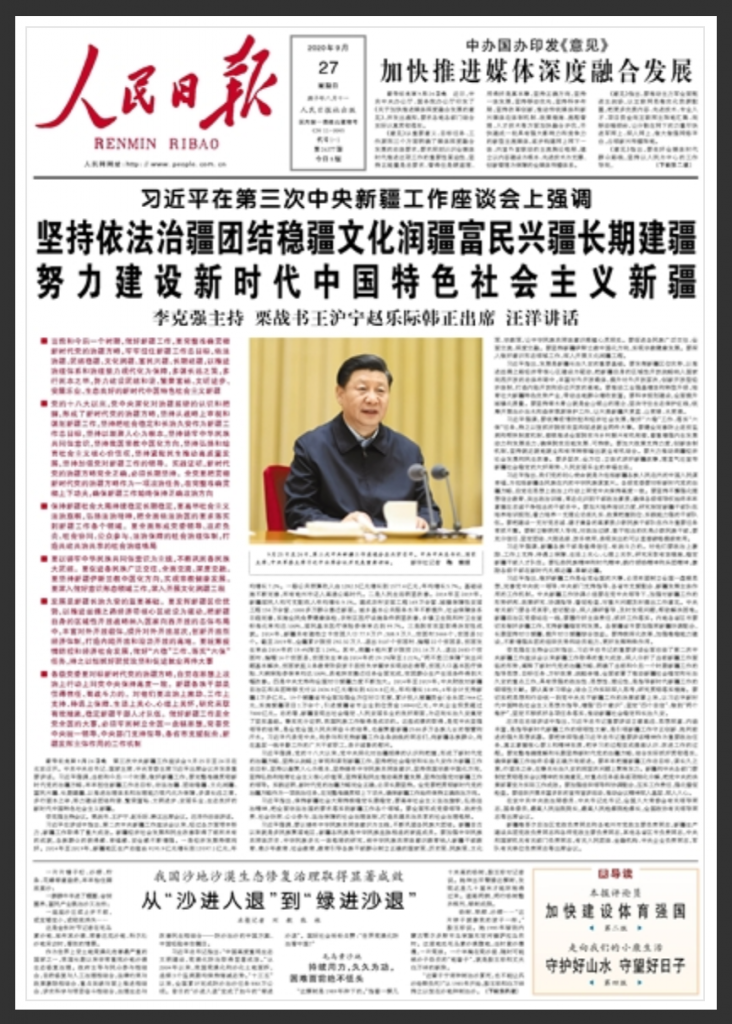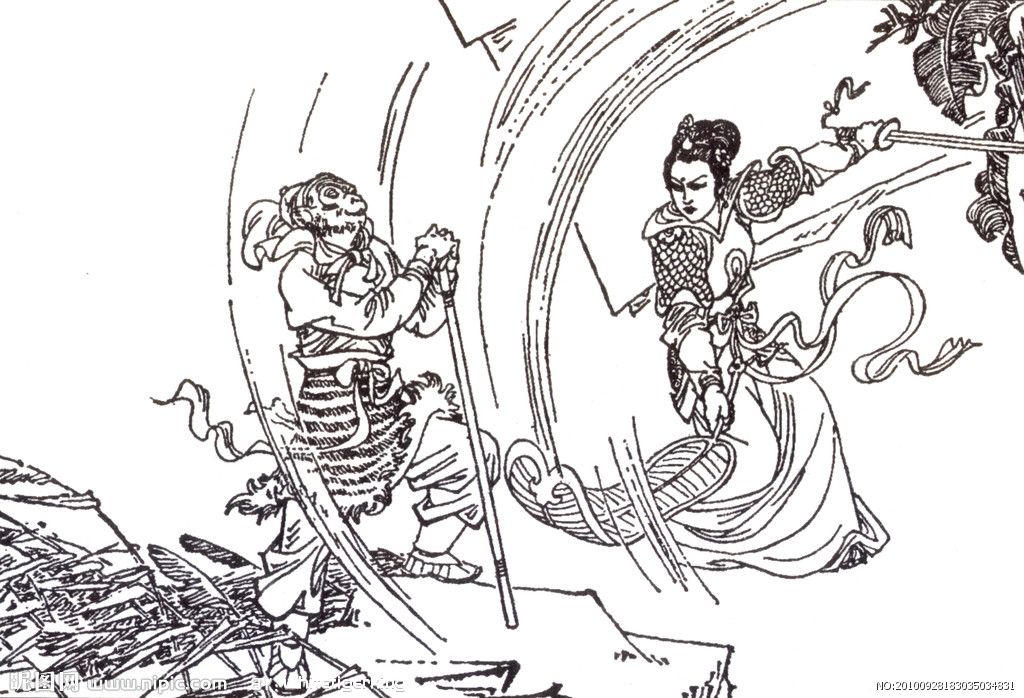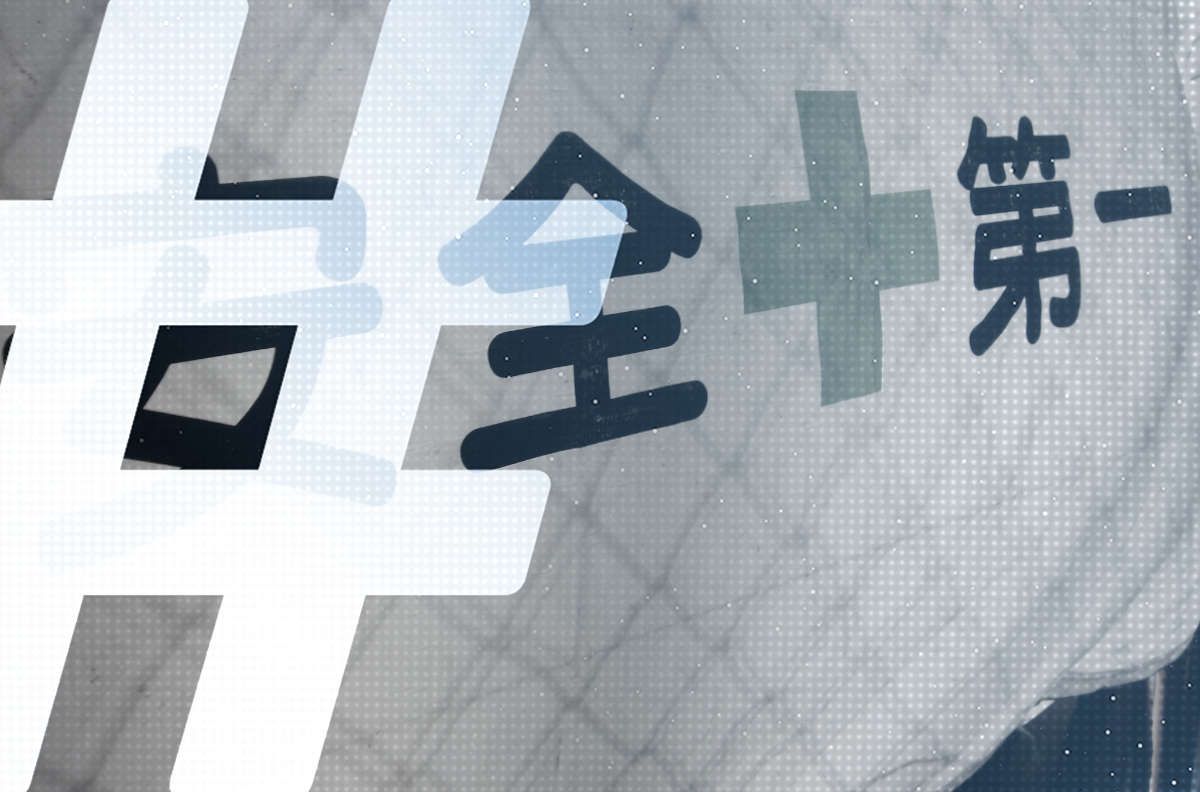
Image by Breaking Asia, available at Flickr.com under CC license.
Anyone could be forgiven for entirely ignoring last week’s China New Media Conference (中国新媒体大会), held over two days in the city of Changsha. Attended by propaganda officials, journalists, internet company representatives and communications scholars from across China, the event dealt with the insipid theme, hardly enlivened by official news releases, of “media convergence.”
How could this conference possibly be relevant outside the drab echo chamber of elite Chinese politics and communication, much less outside China? Beyond the usual parade of official news in Chinese, only Hong Kong’s South China Morning Post paid the event any heed at all.
But hold on just a minute. This year’s conference, which opened with an address from Xu Lin (徐麟), director of the State Council Information Office and a deputy propaganda minister, was an illuminating and deeply important look at media policy in China – with implications domestically and internationally. It essentially outlined how the Chinese Communist Party intends to leverage transformations in global communication, both at home and abroad (though the latter is more implied), to sustain the regime and increase its influence internationally.

The event followed the September release of Opinions on Accelerating the Promotion of Deep and Integrated Media Development (关于加快推进媒体深度融合发展的意见), which was important enough to make the space just to the right of the masthead in the September 27 edition of the CCP’s official People’s Daily newspaper. The Opinion spelled out a range of actions to be implemented at all levels and at all departments in China in order to create “an omnimedia communication system with assurances provided by innovative management” (创新管理为保障的全媒体传播体系). The meaning of this will become clearer as we proceed.

Broadly speaking, media convergence in any context is about the integration of information and communications technologies, various forms of media content, and computer networks – for which some scholars now use the shorthand “Three C’s” (communication, computing and content). This may sound like a fringe concern, something to be hemmed and hawed over by communications scholars at some afternoon panel, but in this context media convergence is about so much more.
One of the key messages in Xu’s address to the conference was simple. “[We] must resolutely prevent the weakening of the Party’s leadership in the name of convergence,” he said, “and must resolutely prevent the risk of capital controlling public opinion.” For the Chinese Communist Party, media convergence is really about harnessing of the digital media revolution – which in any case is happening – to serve and preserve the Party’s political dominance. The stakes are large, and China’s leaders want to get this right, which is why it has become, as Xu said, a “national strategy.”

At its most fundamental, media convergence (媒体融合) in China is about resolving the dilemma facing the so-called “mainstream” media of the Chinese Communist Party – namely, that they no longer appeal to wider audiences in an era of digital media proliferation. The challenge is to ensure that the CCP’s dominant ideology, wrapped up in the affirmation and consolidation of its own legitimacy, can permeate throughout social media and commercial websites and accounts.
Xu Lin spoke in his address to the conference of the goal in the last five-year plan to “build up a new mainstream media” (新型主流媒体), and to build up “strong county-level media convergence centers (县级融媒体中心). The project, in other words, involves a deep-level and nationwide transformation and re-building of the CCP media system. It seizes the moment of digital transformation, a trend shared across the globe, to re-insert the Party at the center of media development – after what has since the 1990s essentially been an increasing process of Party media marginalization.
Battling in the Belly of Princess Iron Fan
Concern over the possible, perhaps impending (or so is the fear), loss of dominance over public opinion is a constant theme for the CCP leadership, still enshrined in the central propaganda notion, dating to the brutal crackdown on pro-democracy protests in June 1989, that “guidance of public opinion” (now synonymous with media control) is essential to preserving regime stability. Throughout the Hu Jintao era, and the latter part of the Jiang Zemin era that preceded it, the project of “guidance” was in tension with the trend of media commercialization, the emergence of a vibrant internet space, and the rise of a sometimes restive core of professionally-minded journalists, and an increasingly curious and consumption-oriented population with an appetite for information but also for entertainment.
In August 2013, in his first major speech on ideology after coming to power, Xi Jinping outlined the context of the Party’s struggle against dissent. “As for propaganda and ideological positions, if we do not occupy them, others will,” he warned his audience of propaganda apparatchiks. He talked about “three zones” existing in the field of public opinion and ideology. The first was the “red zone,” or hongse didai (红色地带), which consists primarily of “mainstream media,” meaning her Party-controlled media, and “positive forces online.” This zone, said Xi, “must be held, and absolutely cannot be lost.”
The second zone was the “black zone,” or heise didai (黑色地带), which was principally comprised of “negative language” online and in society, but which according to Xi “also includes the speech manufactured by various hostile forces” – this being a catchall term for the CCP’s internal and external enemies, though it is often understood to refer to unspecified acts of infiltration by foreign sources with hostile intent. “This is not the mainstream,” Xi said of the black zone, “but its influence must not be underestimated.”
The third zone was the “grey zone,” or huise didai (灰色地带), “existing between the red zone and the black zone.” In dealing with these various zones, Xi proposed differentiated strategies. For the red zone, the focus should be on “consolidation and expansion, steadily enlarging its social influence,” said Xi. But his characterization of the strategies for the grey and black zones was most interesting, and perhaps chilling:
For the black zone, we must courageously enter it, like [Sun Wukong] entering the belly of Princess Iron Fan to do battle, steadily promoting its red transformation. As for the grey zone, we must carry out large-scale work, accelerating its transformation into the red zone, preventing its metamorphosis into a black zone. This work must be firmly grasped, and with perseverance it will obtain results.
Xi is known to have a fondness for colorful language and historical and literary references, and his mention in this passage of “entering the belly of Princess Iron Fan to do battle” can be understood as a colorfully oblique reference to the larger project of co-optation, not just of alternative or potentially competing messages inside China, but of critical voices globally.
The reference comes from the 16th century Chinese classic Journey to the West, in which at one point the main protagonist, the Monkey King, or “Sun Wukong” (孙悟空), possessing a magical staff that enables him to shrink down to the size of a needle, does battle with Princess Iron Fan (铁扇公主), the wife of the Bull Demon Kong, by morphing into a fly, entering her mouth and flying down into her gut. Once inside Princess Iron Fan’s soft belly, the Monkey King punches and kicks her into submission.

Xi Jinping’s colorful literary allusion, along with his identification of three public opinion zones, tells us a great deal about the CCP’s objective in harnessing the digital revolution. The point is to ensure that the Party’s political frames permeate the public opinion space domestically, consolidating the “red” hold over grey zones, and transforming, through a process of deep internal struggle, black zones into red strongholds. This can be accomplished only if the Party has a strong, and also pliable and innovative, grasp of “media convergence,” of the entire process of content creation, distribution and demand.
In his speech to the China New Media Conference, Xu Lin addresses six key aspects of the CCP’s “national strategy,” which I include below with commentary and context.
Accelerating the full construction of an omnimedia communication system (全媒传播体系)
Xu Lin outlines the creation of an comprehensive national system at four levels, from the center to the province, city and country, that integrates content production and distribution through “advanced [communication] technologies” (先进技术) – and is “resource intensive” (资源集约) with a “high-level of coordination” (协同高效). Xu characterizes the internet as the “principle battleground” (主战场) and recognizes that mobile-based and video content is a more and more dominant trend. Talking aabout the relative roles of Party media (those directly overseen by Party Committees) and commercial media (commercially operating spin-offs overseen by Party or government bodies, and for-profit online media), Xu says that while Party media will set the tone of “mainstream public opinion” (主流舆论), meaning Party-led messaging, “commercial platforms will principally serve as channels, their technological and other advantages aiding the transmission of mainstream public opinion.”
Adhering throughout to correct guidance of public opinion (始终坚守正确方向导向)
As I mentioned earlier, “correct guidance of public opinion” remains a key term denoting the central prerogative of information control to achieve regime stability. “The guidance and value orientation of public opinion is the soul of news and public opinion work,” says Xu in this section. And he states the overarching priority of media control in the midst of technological transformation more clearly here than we have perhaps seen in some time. He says: “The development of convergence may bring a change in the forms of the media, but regardless of what kind of media, regardless of whether these are mainstream [CCP] media or commercial platforms, regardless of whether they are online or offline, regardless of whether they are small-screen or large-screen, in terms of guidance there is only once standard. There is no land outside the law, and there are no public opinion enclaves.” While convergence is a priority in consolidating the Party’s control over the message, Xu is very clear here that “we must resolutely prevent the weakening of the Party’s leadership in the name of convergence, and must resolutely prevent the risk of capital controlling public opinion.”
These two points are the real heart of information policy, and the most important aspect of Xu’s remarks, reflecting what has been called “Xi Jinping Thought on the News”(习近平新闻思想).
Beyond this fundamentals, the leadership understands that there is demand for information that it is effective and appeals. Today’s propaganda cannot be yesterday’s propaganda, and it must not seem so to increasingly savvy Chinese audiences. Moreover, it must accommodate if not lead the global standard in terms of technology, so that China reaps the economic and political benefits. And so:
Focus on expanding the production capacity of high-quality content (着力扩大优质内容产能)
Xu says that in the current information environment, what we see is “the proliferation of information, and feel that quality content is scarce.” “Whether or not we can attract the masses, and whether or not we can lead public opinion, and building consensus, is ultimately up to whether or not our content is good.”
As George Orwell wrote, “Doublethink means the power of holding two contradictory beliefs in one’s mind simultaneously, and accepting both of them.” And here, in Xu’s third aspect, we can glimpse the doublethink at the heart of the CCP’s conception of media development and control – that you can have a vibrant media space, commercially viable and creatively responding to audiences, even as you dominate and control it. In the simplest sense, the media revolution that unfolded in China from the 1990s, even as Jiang Zemin spoke of the “Three Closenesses” (三贴近), essentially the idea that control and commercialization could proceed side by side, exposed the flaws of this doublethink. One important result was the emergence of a professional and often restive commercial media space that fought to greater space and air to breathe – and had a deep imprint too on the internet and early social media spaces in China as fields that complicated the Party’s project of “guidance.”
Media policy under Xi Jinping comes at a time when the CCP seems to have much greater hope that the technological tide is in their favor, as the tools of creation and distribution can also now be tools of restraint, repression and surveillance.
In this section too, Xu talks about the need to create a flood of information the spreads “positive energy” (正能量), another specialized media terminology under Xi Jinping that essentially is a makeover of an older term of the Jiang and Hu eras, the need to “emphasize positive propaganda.” Imagine a world of colorful, uplifting and entertaining media products, none of which turn thoughts to the unfortunate aspects of life, society or politics.
Actively seizing the high ground of communication technology (积极抢占传播技术高地)
Media convergence, says Xu, is a “media transformation brought on by technological innovation.” Technologies like 5G had driven transformation, and to stay on top in terms of guiding public opinion and ensuring the dominance of the Party as “mainstream,” the leadership must ensure that it is not just leading technological trends, but also leading in terms of the means of harnessing and controlling them.
In the past, perhaps, Chinese leaders were unprepared for various forms of media transformation, including media commercialization –coming ahead of China’s World Trade Organization membership in the late 1990s and greater integration with the global economy – and the rapid rise of social media platforms like Weibo. This time, they are determined to be prepared. “We must strengthen forward-looking research and the application of relevant new technologies in the field of news and communication,” Xu said, “and we absolutely must not simply look on and take a passive approach to dealing with them.”
Resolutely advance deepening reforms (大刀阔斧推进深化改革).
Advancing and controlling the media transformation from a technical perspective is of course not enough. The priorities outlined in the first two aspects that Xu addresses will require the CCP also to remake the human mechanisms of media development and control. It will no longer be sufficient, for example, to have one leader on the traditional media side and another on the new media side, what Xu calls a “two skins” approach. Patchwork approaches and temporary fixes must give way instead to more comprehensive solutions on the management side, which involves of course both content production/distribution and the policing of “correct guidance.”
Xu’s final aspect is about the people who will staff and implement this new vision of the Party-led media system.
Fully stimulating the vitality of talent teams (充分激发人才队伍活力)
“The core competitive strength of the media lies in its people, and talent, the unit, is critical to achieving convergence,” Xu says. He talks here about developing the proper human resource and training programs, and also “scientific systems of examination and assessment.”
China’s Story Converges
The “national strategy” of media convergence, Party-led digital transformation, or whatever else one wishes to call it, is an ambitious project with far-reaching implications not just for speech and information inside China, but for the global conversation on a range of issues touching on China’s ever-broadening interests — from security to 5G, from diplomacy to trade and investment, from health to human rights and democracy.
Xi Jinping has emphasized that China must expand its “discourse power” internationally by “telling China’s story well,” which essentially means shifting global narratives to suit the objectives of the CCP, with regime preservation topping the list. Just as it is key to the transformation of domestic media control, media convergence is at the heart of the re-envisioning of external propaganda and influence. In 2016, an article appearing in the People’s Daily and addressing the creation of “a new mainstream media” said that “innovative expression, and telling China’s story well, require promoting the integrated development of traditional media and emerging media, not losing any opportunity.”
In a study published last year, Chinese communication scholars Jia Wenshan (贾文山) and Zhao Limin (赵立敏) wrote for the China Social Sciences Daily (中国社会科学报) — in an article exploring the expansion of China’s “international discourse power” (国际话语权) against a dominant West — that “[how] the media tells Chinese stories well and enhances the dissemination capacity of China’s international discourse raises new expectations for media convergence.”
Understanding the international dimensions of the national strategy of what might also be called China’s “red convergence” will unfortunately require a great deal more attention to insipid events like last week’s China New Media Conference, and to equally insipid documents like the September Opinions on Accelerating the Promotion of Deep and Integrated Media Development. For Xi Jinping’s CCP, global cyberspace is a map of black, grey and red, and it is not at all an exaggeration to say that media convergence is a battle cry.
According to a report from local Hunan media, a top China Media Group executive attending the China New Media Conference, Liu Xiaolong (刘晓龙), said that “mainstream” CCP media must “persist in using offense as defense in transmitting China’s voice.” They must strive, he said, to increase the territory they occupy in the field of international communication, fighting with a “combined punch” (组合拳) in what he referred to, echoing Maoist language Xi Jinping has re-introduced to policy-making on communication, as a “public opinion struggle.”
[Featured Image: color overlay of iphone image by barnimages, available at Flickr.com under CC license.]




















